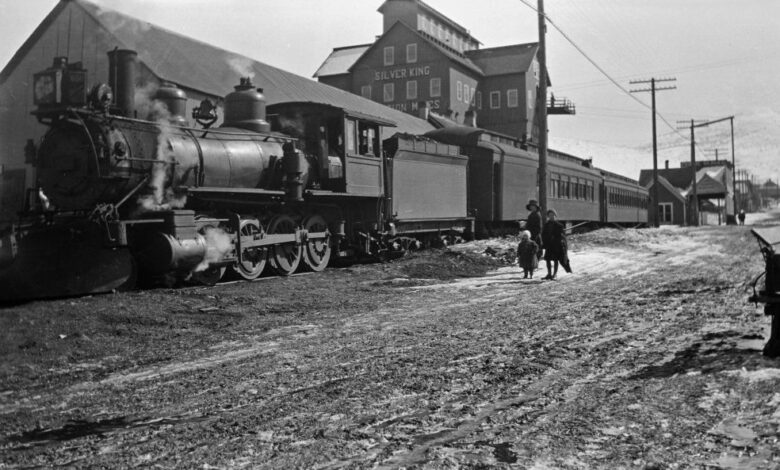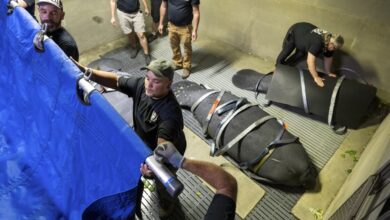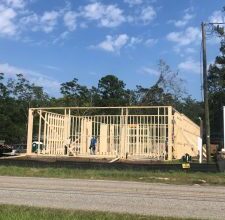Way We Were: Planes, trains and automobiles

Park City Historical Society & Museum, Pop Jenks Collection
Don’t be deceived by the title, this article does not discuss the 1987 comedy classic written and directed by John Hughes, starring Steve Martin and John Candy. Rather, we’ll briefly explore the impact of trains, planes and automobiles on Park City’s economic booms.
In 1860, Democrats and Republicans alike were adamant regarding the need to build a transcontinental railroad. However, their respective ideologies concerning slavery ensured an impasse over which of five potential routes to select. This gridlock was resolved on April 12, 1861, with the attack on Fort Sumter and establishment of the Confederacy.
This cataclysmic event ensured the Republicans a supermajority in the House and Senate. They wasted no time passing a progressive legislative agenda, including the Pacific Railroad Act (1862). This bill established a public/private partnership to construct the country’s (and world’s) first transcontinental railroad. The route chosen included the Utah Territory. By 1869, rails would pass through Echo, a mere 27 miles from the fledgling mining community known as Park City.
By December 1880, the Union Pacific directly connected Park City to a burgeoning national rail network. The Salt Lake and Eastern Railroad arrived in April 1889. In 1890 they were acquired by the Denver, Rio Grande, and Western Railroad (DR&G). A robust road infrastructure evolved as well. Endowed with vast mineral deposits, access to two Class 1 railroads and industrial strength roadways, Park City became one of Utah’s premier mining districts. The first economic boom was firmly established. For a period exceeding 100 years mining would underpin the town’s economy. Planes and automobiles would provide the transition to the second.
On Dec. 17, 1903, the Wright Brothers confirmed that human flight was possible. The ensuing technological advancements proved stunning. In 1911, Salt Lake City purchased 100 acres of desolate land six miles west of town to construct an airport. It was named Woodward Field. That same year Salt Lake City would host the Great International Aviation Carnival, which 20,000 people attended.
The U.S. Postal Service began air mail service to Sal Lake City in 1920. Two early aviation visionaries, Bill Boeing and Donald Douglas Sr., would both experience an indirect connection to Park City. These independent events, March 1929 and November 1941, would feature a blend of disaster and divine intervention (see a museum lecture on the 1941 event on Oct. 18 from 5 to 6 p.m. at the Museum’s Education and Collections Center at 2079 Sidewinder Drive).
In 1908, Henry Ford introduced his Model T, a product designed for low-cost mass manufacture. As with railroads and planes, the automobile would change the world, and Park City.
By the 1930s, the good times were over for Park City’s mining industry. Though mineral extraction would continue until 1982, it was but a shadow of its former self.
The town’s survival required economic diversification. The transition to a winter sports-based model began in 1928, though it would proceed in fits and starts over 50 years. Automobiles allowed skiers to enjoy “day trips” to Treasure Mountain’s Resort (opened December 1963) and Deer Valley (opened December 1981).
Woodward Field was renamed Salt Lake City Municipal Airport in 1930. In 1968 International was substituted for Municipal. The airport itself became an economic engine benefiting the state and Park City.
In 2002, Utah hosted the Winter Olympics. The privilege to do so depended equally on the region’s topography, winter endowments, and transportation infrastructure. The second economic boom of Park City was thus realized.
On Saturday, Oct. 14, from 10 a.m. to 1 p.m. Alan Dearden, Steve Leatham and David Nicholas will host a walking tour of the railroad infrastructure that once served the mining industry in town for Museum members. Become a member and sign up at parkcityhistory.org.
David Nicholas and Steve Leatham are Park City Museum researchers.



